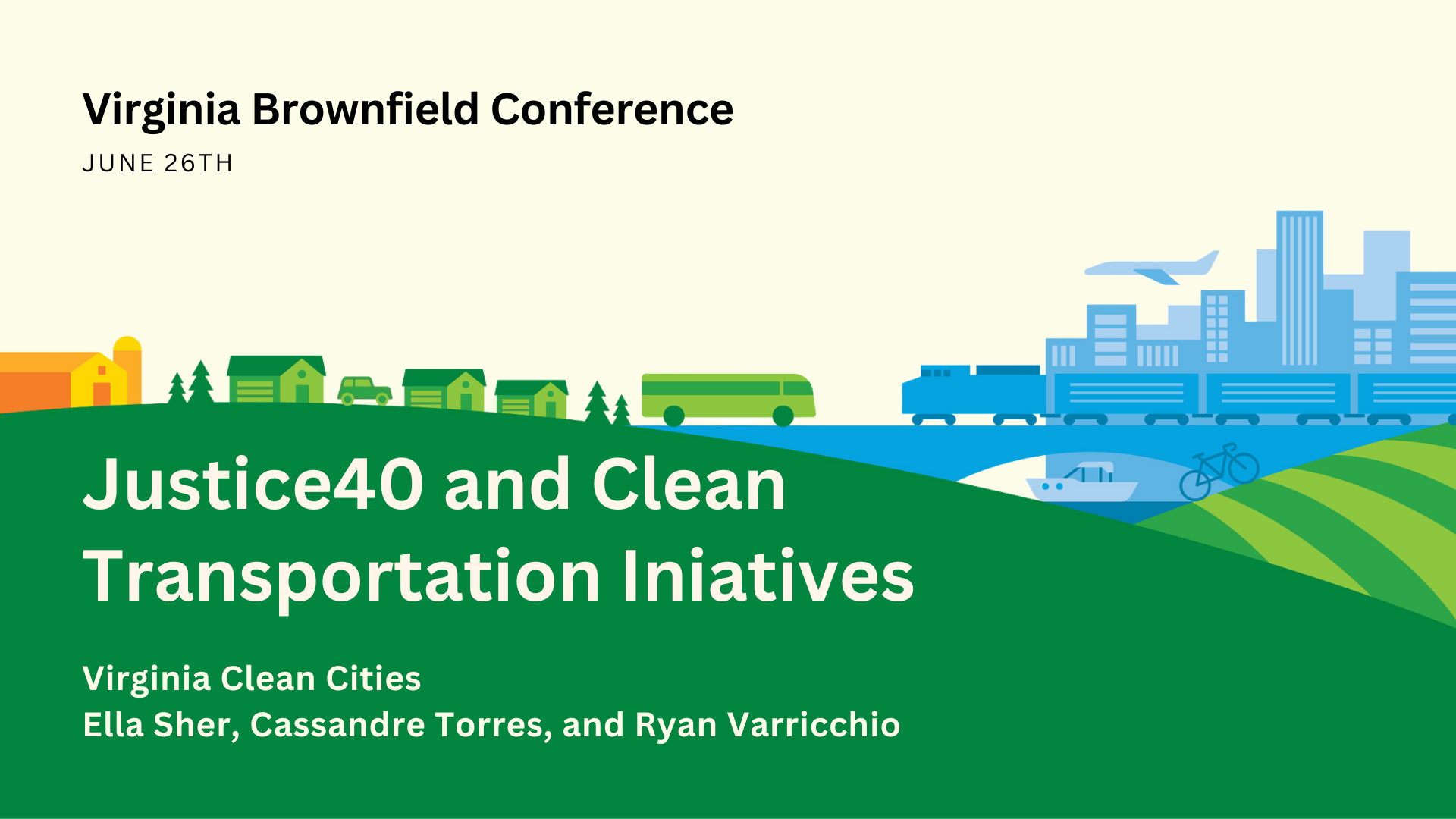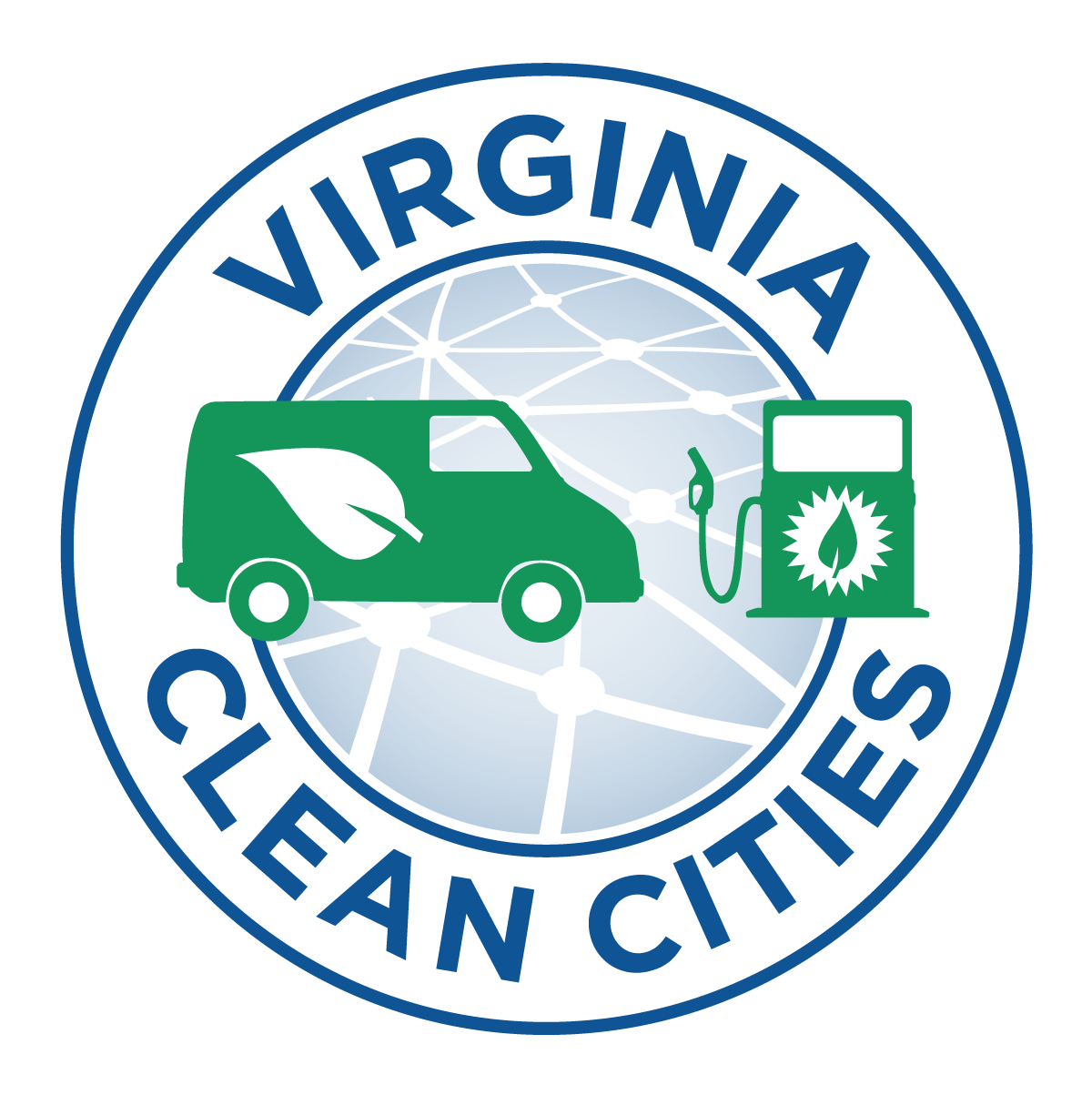
Written by Ella Sher
Last week, two colleagues and I attended the 2024 edition of the Virginia Brownfields Conference, sponsored by the Virginia Department of Environmental Quality (DEQ) and hosted by the City of Lynchburg. For context, brownfields are abandoned swaths of environmentally contaminated land formerly home to large industrial sites. These sites contain a high potential for environmental revitalization, which if not carried out, can often allow blight and dangerous toxins in communities to persist.
As a student interning at Virginia Clean Cities, I work most often within our mission of advancing air quality through clean transportation. This means I am only beginning to grapple with the negative effects brownfields have on communities, specifically in Virginia. However, my unique perspective made the experience at the conference especially illuminating.
We kicked off the day with a talk from Adam Ortiz, the EPA Mid-Atlantic Regional Administrator, in which he profusely expressed his gratitude for the work of local, regional, and state professionals. More specifically, Ortiz took the time to recognize EPA grant-recipient towns, like Dumfries, Virginia, currently experiencing disproportionate environmental destruction. Communities like Dumfries fall under the Justice40 Initiative, the mandated distribution of 40% of federally allocated funds to communities over-burdened by climate change, established by President Biden’s Executive Order 14008. As a result of this initiative, the Town of Dumfries was awarded $1 million from the EPA as a part of its Brownfield Multipurpose Grant, aiming to revitalize brownfields in disadvantaged communities.
Grants, like the one earned by Dumfries, led to conversations in Lynchburg on specific strategies for how to revitalize brownfields, equitably. Many organizations, both public and private, had far-reaching and imaginative solutions, ours was no different. Although Virginia Clean Cities is a clean transportation organization, my colleagues and I presented later that day on the benefits of converting the waste sites to electric vehicle (EV) charging stations. Cassandre Torres, our Community Engagement Liaison, spoke passionately about cultivating trusting relationships with community members during the creation of Community Action Plans and before taking on revitalization projects like the above.
Post-presentation, this sentiment was emphasized by another group pursuing specific community revitalization projects. We listened to Cora Gnegy, Tourism Marketing Director of Giles County, Virginia, and her co-presenter Kristina Ramsey, Director of Economic Development of Buena Vista, Virginia, as they enthusiastically outlined the specific rejuvenating projects in their jurisdictions. Most significantly, Gnegy brought our concept of Community Action Plans to life, in describing the methodology she used to create one, in 2020. The three-part engagement process of “Plan, Convene, Act” led to a virtual workshop of over 50 Giles County residents and other stakeholders. Throughout the seven sessions, the participants steered the conversation toward their wants and needs, while receiving professional guidance from federal and local professionals. Ultimately, the plan was deemed a success as efforts to create more accessible resources, like kayak-rentals on the county’s waterfront, are currently being put into action.
Equitably developing a Community Transportation Action Plan involves trust, collaboration, and effective communication amongst community members of all backgrounds. This experience of attending and presenting at the conference not only expanded my horizons on brownfield/waste management strategies but also empowered me to listen to my community on a deeper level. In the future, I hope to become more involved with environmental justice and issues in my career.
If you’re inspired to work with us on a brownfield revitalization project, share your interest with me via email to esher@vacleancities.org.
